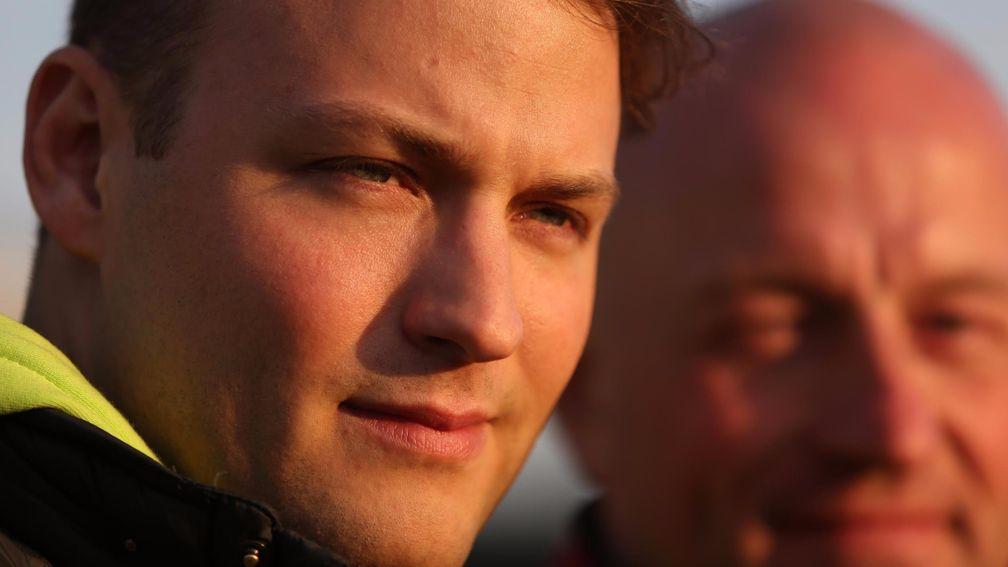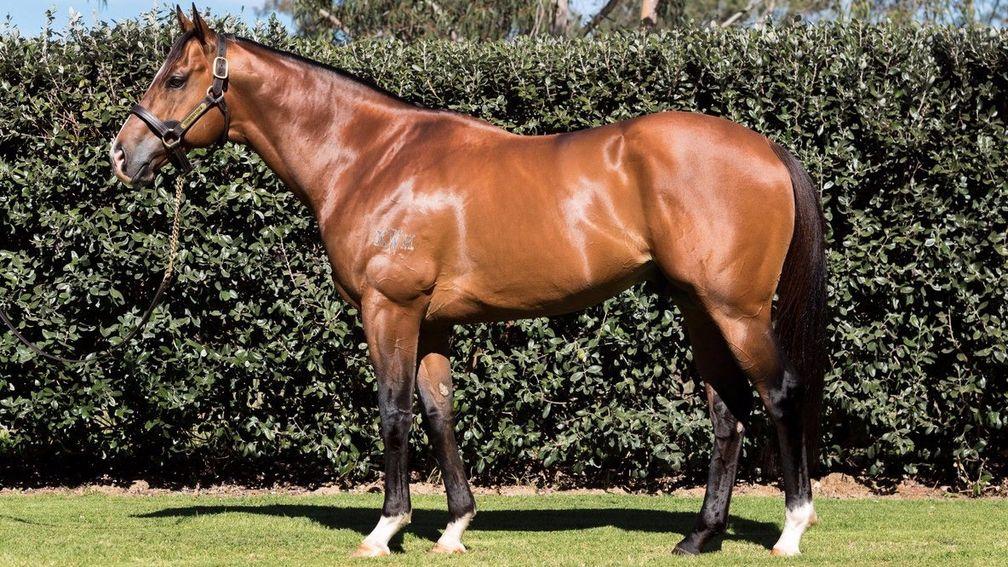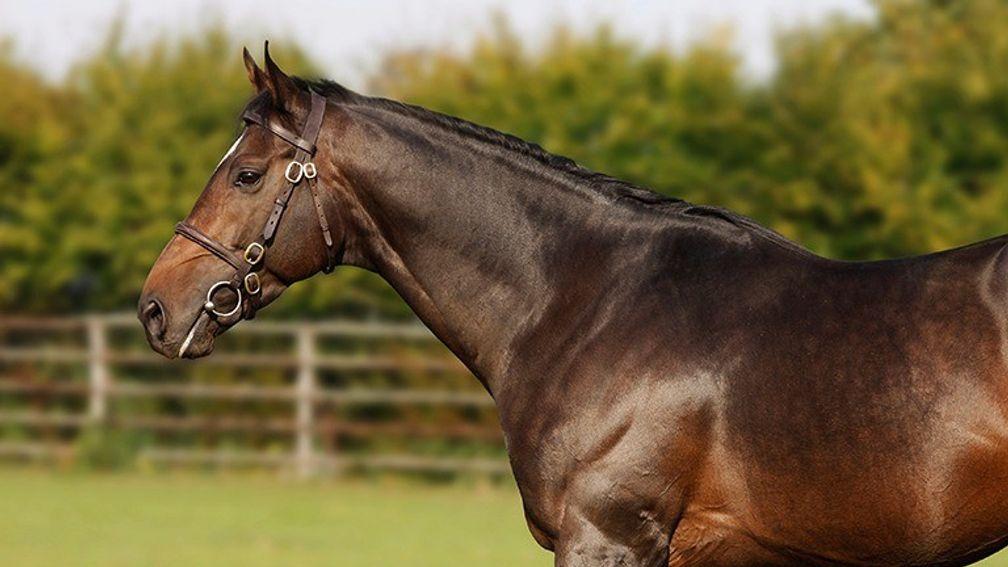Breaking new ground by shuttling an Aussie sprinter to Germany
The young agent tells us about the deal and other breeding issues

It was recently announced that Counterattack, a Group 3 winner who found only star sprinter Redzel too good in the Doomben 10,000 in May, would be shuttling from Kitchwin Hills in Australia to Gestut Karlshof in Germany.
The son of breed-shaper Redoute's Choice and half-brother to Group 1 winners Red Tracer and Shellscrape will stand in the northern hemisphere at a fee of €6,500.
Here, Holger Faust, who manages Gestut Karlshof near Frankfurt for his parents Bruno and Michaela and runs the HFTB Agency, tells us about the deal to shuttle Counterattack, his own background and wider issues in German breeding.
How did the deal to shuttle Counterattack come about?
I've been working with the Tried And True Bloodstock Agency from Australia – we've bought a couple of German horses in training this season and send them down under.
One day Tried And True came up with the idea to shuttle Counterattack and bring him to our stud, Gestüt Karlshof in Germany. I liked the idea straight away, so we got the deal done.
Is it quite unusual for a horse to shuttle from Australia to Germany?
I'm not sure of how many stallions have travelled between Germany and Australasia before. I can only think of Reliable Man, who shuttled from New Zealand and has been really successful with his first crop, supplying the winners of two of the four Group races for two-year-olds in Germany this year.
We consider ourselves lucky as a German stud to get such a young and interesting stallion as Counterattack, but we have a good track record.
Gestüt Karlshof stood Dabirsim in his first two years at stud and we broke the all-time German record with him by covering more than 140 mares in one season. It will be very difficult for that record to be broken again. And now Dabirsim's first crop looks like making him the champion sire of two-year-olds in France, so that's a pretty big deal.
In the past we also made our homebred stallion Samum the champion sire in Germany in 2008. I think those facts gave encouragement that we have the right credentials to stand a horse as exciting as Counterattack.
Germany is best known for middle-distance horses and stayers, but Counterattack is a sprinter. Is this a deliberate effort to diversify bloodlines?
Yes indeed. Germany is famous for stayers like Protectionist, Novellist, Danedream, Manduro, Schiaparelli, Shirocco, Samum, Almandin and many, many others.
But in the last 20 years Big Shuffle and his son Areion, who were faster horses, have won around half of the German champion sire titles with an outstandingly high number of stakes winners and black-type performers. So I think Counterattack will be a perfect fit for German and French broodmares.
Have you seen Counterattack? What can you tell us about his physique?
I haven't seen him in the flesh yet but I've seen all his racing videos and pictures, as well as footage of him at stud in Australia. Plus, people whose opinions I trust have told me he's a good-looking, powerful, typical Aussie horse.

Is this deal for one year or will Counterattack return to Karlshof in future?
We've made a contract for a few years, but if things don't work out, like he doesn't get a sufficient number of mares, then we might need to have a rethink. I hope he'll keep coming back for a very long time!
How are the other Karlshof stallions, Samum and Kamsin, doing?
Samum is a weird story. He was German champion sire in 2008 and had a tremendous start with his first four or five crops, but then he just went very quiet and it remains that way now. I really don't know why.
He's still standing at Karlshof and is going to cover a few mares next season. I wouldn't be surprised if one day there was another top stayer by him that emerges. His fee will be €3,000 next season.
We sold 50 per cent of Kamsin to Haras d'Etreham and they now use him as a National Hunt sire. He's had only around five jumps horses and I think I'm right in saying they are all winners. Ava, still owned by Gestüt Karlshof, is a very talented filly over hurdles in training with David Cottin and On The Go, trained by Guillaume Macaire, was a Grade 1 winner over fences at Auteuil this month.
So I think Kamsin will be very popular with jumps breeders. His fee will be €3,000 in 2018.
Tell us a bit more about yourself
I grew up in a racing family. My grandfather was the owner and breeder of a German Derby Winner named Navarino in 1980. My parents own Gestüt Karlshof, which was established in 1991, and my father has already bred three German Derby winners – Samum (2000), Schiaparelli (2006) and Kamsin (2008).
The special thing about Kamsin is the fact that my father bred both his sire and dam, Samum and Kapitol, who was a Group winner. So Kamsin was 100 per cent Karlshof.
I was always interested in racing when I was younger, especially about betting on horses, and that's why I wanted to know everything about the sport.

I was always in touch with all the daily business on the stud and I formally started working for it in 2006 by managing our horses in training. In 2008, after three German champion breeding titles and a good number of Group 1 winners bred with my input, Gestüt Karlshof won its first Group 1 race with a horse carrying our own colours, with Baila Me (by Samum out of Bandeira) in the Grosser Preis von Europa in Cologne.
From that time on I focused more and more on working in the industry. In 2011 I bought my first horse at the sales for us: that was at the Arqana December Sales and the name of the horse was Sortilege, who cost €30,000. She was already a winner but I thought she could be improved and one year later she became a Group 1 winner in the Premio Lydia Tesio, beating stars like Sajjhaa and Cherry Collect, who had been unbeaten that season until then.
I decided to establish my own bloodstock agency, the HFTB Racing Agency, in 2013. I do almost everything involved with racing, but of course buying horses and racing management are the main parts.
You bought last year's German Derby winner Isfahan on behalf of Darius Racing for just €35,000 at BBAG. How did you manage that?
When I buy horses, I have a smaller budget than those agents who can make a play for the most obvious pedigrees. So I never really looked at Galileo, Dubawi, Frankel, Sea The Stars or Shamardal yearlings, just because I don't have the money to buy them. So when I go to the sales in Baden Baden (BBAG), Deauville (Arqana) or Kildare (Goffs) I look for value-for-money horses; horses that, to my eye, can win races and be better than average.
When I saw Isfahan, I was 100 per cent sure that he would be a good horse and definitely better than average. The owners of Darius Racing liked him as well, and maybe they would have spent double the actual price for him, but it was just not necessary that day.
In three years of buying young horses at different sales, I've already bought four independent Group winners and more than ten stakes winners, and the Holy Roman Emperor mare Parvaneh is definitely worth mentioning. She was the most expensive horse I've bought at the sales so far – she cost €175,000 at the Arqana Breeze Up Sale. She won two Group races and was the top lot at last year's Arqana December Sale, by selling for €1 million.
I would love to buy more young horses and do so with a bigger budget, but there are no German clients left willing to spend that money. German racing has become a game of owner-breeders, with the big traditional studs and only a few stables like Darius Racing, Eckhard Sauren or Stall Salzburg to compete with them.
How popular has Isfahan been in his first season at stud?
Very popular. Isfahan covered 89 mares in his debut season this year, which put him third in the ranking of German sires by the number of mares covered. Darius Racing still owns him and of course everybody is very excited about his first foals.
Isfahan still stands at Gestüt Ohlerweiherhof and his fee will again be €4,000 in 2018.
Sacarina was a wonderful mare for Karlshof, producing three German Classic winners in Samum, Schiaparelli and Salve Regina. How did your parents acquire her, and do you still have daughters and granddaughters to breed from?
It was my father who bought Sacarina back in the day. He's a fantastic breeder with a great instinct and vast knowledge of bloodlines and matings. I've really learned a lot from him.
He was sure that this Old Vic mare would match perfectly with the old German sire-lines, so he sent her to Monsun and repeated the mating a few times and the rest, as they say, is history!
Sadly she died in 2011 but we have the Group 1 winner Sortilege, out of her daughter Sahel, and Sola Gratia, a full-sister to Samum, Schiaparelli and Salve Regina at home, plus three fillies out of those two mares, so we've still got plenty of breeding prospects from the bloodline of Sacarina left.
Karlshof breeds lots of top-class Flat horses but also some good jumpers, like Sternrubin and Whiteout. Are you still proud of these winners?
Of course, we follow all our homebred horses and we celebrate big wins over jumps in the same way as a big success on the Flat. I think the deep influence of Monsun, the greatest stallion of all time in Germany, on our breeding is the main factor in why we breed some good jumpers as well.
I do believe that Kamsin, a grandson of Monsun, will become an extraordinarily good National Hunt sire.
Is German breeding generally in good health?
The simple answer is no. As I mentioned earlier, we have only a few – maybe five to ten – owners left who are willing to invest. The rest are owner-breeders, the big traditional stud farms.
We're not able to find new, especially young, people to take part in our sport. Without foreign buyers the BBAG sale in Baden-Baden wouldn't be successful, maybe even wouldn't survive. The prize-money hasn't increased for ages and racetracks close every year, like Bremen and Frankfurt, or existing tracks don't even host meetings.
The number of foals produced in 2017 stayed the same as the year before but the number had decreased every year for over a decade before then.
We need a change. We need the money spent on betting going into the cash desks at tracks. There is always optimism and hope, because our core product of racing will always be exciting and enthralling, but we have to face the truth.
Published on 26 November 2017inInternational
Last updated 16:14, 26 November 2017
- Two-year-old colt Mensa breaks Fasig-Tipton Digital record at $740,000
- 'A rare and valuable gem' - world’s highest-rated mare Imperatriz tipped to threaten longstanding sale record
- Landmark first Classic success for Havana Grey as Beenham wins the Italian 1,000 Guineas
- First European Classic win for Kessaar as Melfi wins the Italian 2,000 Guineas
- Haya Zark springs a surprise at Longchamp to give Zarak a second Group 1 winner
- Two-year-old colt Mensa breaks Fasig-Tipton Digital record at $740,000
- 'A rare and valuable gem' - world’s highest-rated mare Imperatriz tipped to threaten longstanding sale record
- Landmark first Classic success for Havana Grey as Beenham wins the Italian 1,000 Guineas
- First European Classic win for Kessaar as Melfi wins the Italian 2,000 Guineas
- Haya Zark springs a surprise at Longchamp to give Zarak a second Group 1 winner